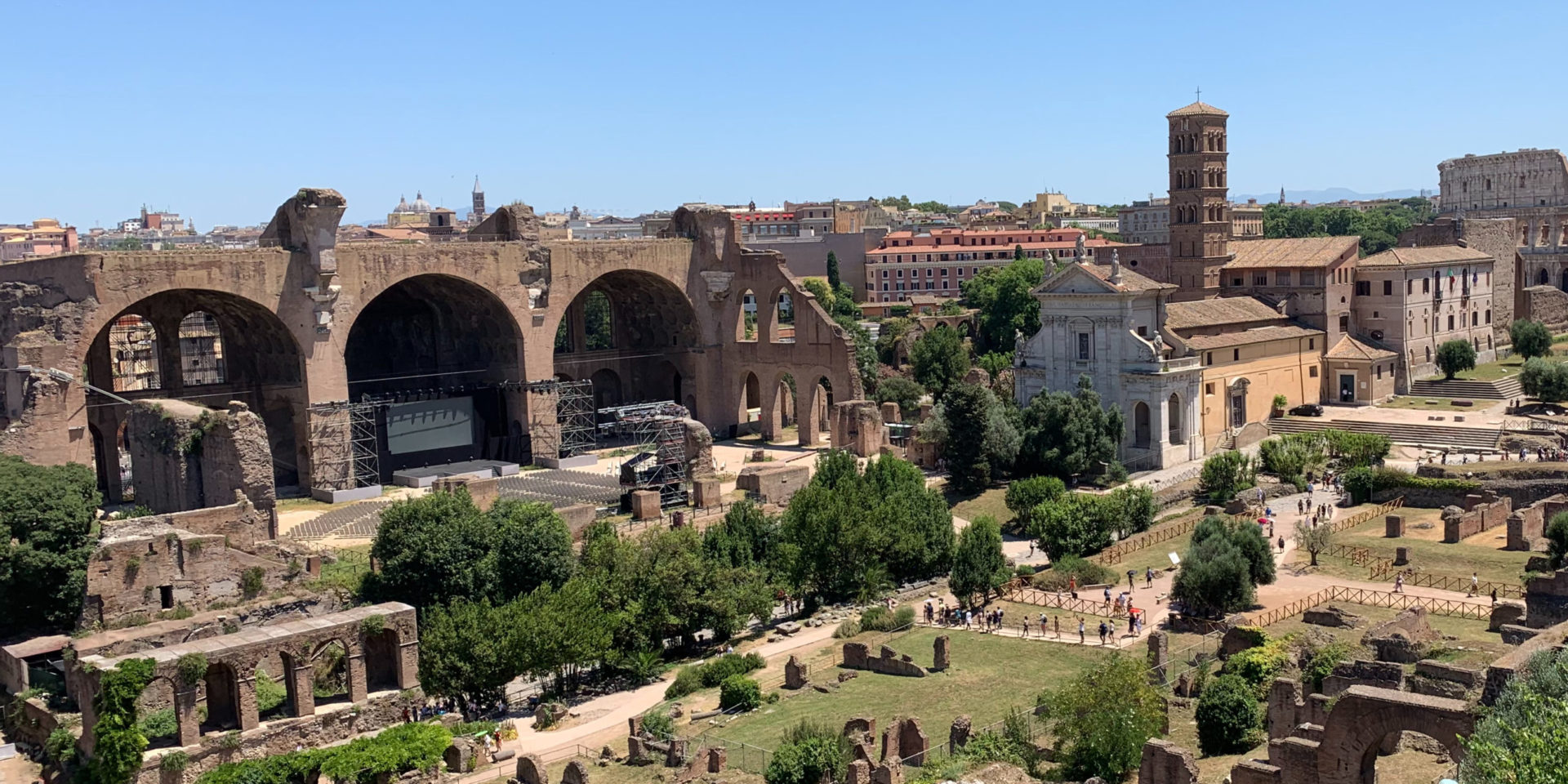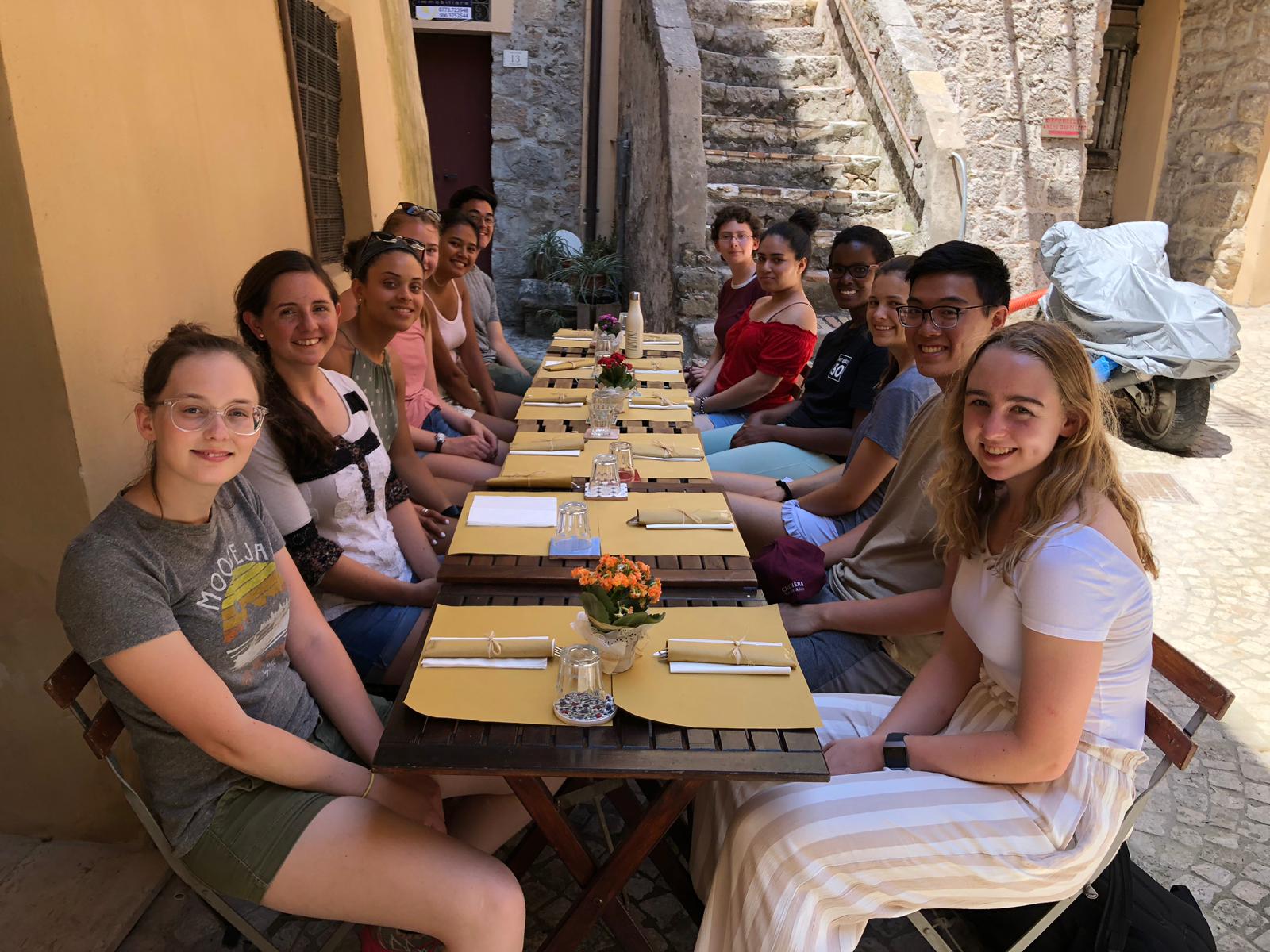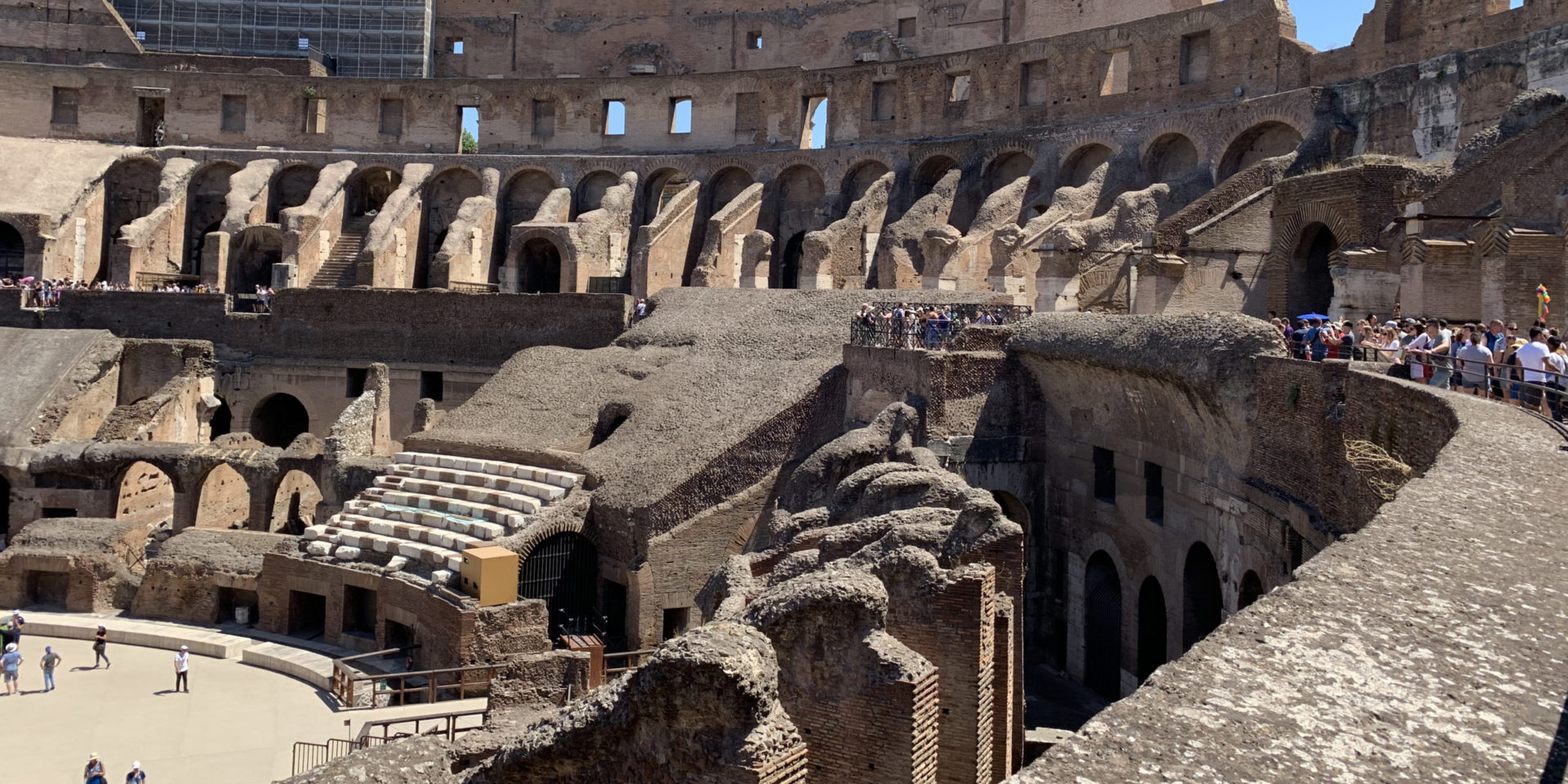ONE-MA3 – Collecting data in Terracina and Exploring the Ruins of Pompeii

By Naomi Lutz ’22
On Thursday morning, we packed up and left the castle after having spent eleven nights there. We were sad to leave the comfort of the castle but excited to visit and stay in new towns and cities. We drove to Terracina and were given a tour of the archaeological sites in the town. After stopping for a gelato break, we finished the tour and sat down for lunch. Much to our surprise, it was a five course meal with more food than any of us could finish. The food was delicious, and it was nice to take a long afternoon break. Next, we visited the town’s museum, admiring many incredible statues and frescoes. Hot and exhausted from the sun, we finally checked into our hotel and crossed the street to go to the beach. We swam and played water volleyball for a few hours, thankful for the cool water. For dinner, everyone thoroughly enjoyed delicious pizza! It is safe to say, it was a great end to an amazing first day in Terracina.

Lunch in Terracina
On Friday, we split into groups and completed four stations of fieldwork. The stations involved testing for Egyptian blue in mosaics, analyzing columns, measuring stones of a Roman road, and using XRF on statues, with photogrammetry mixed in throughout the day. To test for Egyptian blue, we turned off the lights, covered the desired area of the mosaic with a cardboard box, and shown a flashlight through the crack of the box. Egyptian Blue gives off infrared light/radiation when hit with the flashlight, so our special infrared camera can prove that Egyptian Blue is present. For the column station, our TA Janille taught us about the stability of free-standing columns and the process used to determine if columns are likely to collapse from earthquakes in the future. Aqueduct expert Duncan Keenan-Jones, helped us record observations about sections of the Roman road and measure and take pictures of the road. We recorded XRF concentration notes from Admir and reconstructed many statues from the museum. Following this long, hot day of fieldwork, it was time for gelato, the beach, and seafood.

The Ruins of Pompeii
The next morning, we boarded the bus to go to Pompeii. In Pompeii, Duncan gave us a tour of some houses, a few temples, the amphitheater, and a villa. We were all amazed at the mosaics and frescoes seen in some of the houses—they were so detailed and colorful. Floors were covered with mosaic designs with the smallest tiles I had ever seen. After having struggled for 3 hours to make a very small mosaic with much bigger tiles last weekend, the mosaics impressed me the most out of anything in the rooms. Janille pointed out many columns and the restoration methods used on them. When looking at anything in Pompeii, we tried to figure out which parts were original and which were restored. The restored parts were often marked with bricks and are made to look different from the original, but we still struggled in identifying the restored parts in some buildings and parts of the city. Duncan showed us pipes, wells, and an aqueduct which supplied water to the city, explaining the water systems used. We were especially excited to see another aqueduct. After a long day of walking and learning about the history of the city, the building materials used, and the restoration efforts, we stopped for pizza and got on the bus to Rome. It was a busy, exciting few days, and we can’t wait for Rome!
Share on Bluesky


